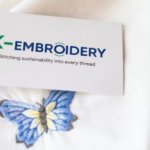How many newborn clothes do I need?
Clothing for newborn babies is a very important item for children. When the baby is in the mother’s womb, it will be protected by the mother’s body. However, after the baby was born, newborn clothes can help protect the baby and keep the baby’s body warm as if it were still in the mother’s womb.
Many mothers wonder what quantity of newborn clothes to buy for their children and how to choose them. Don’t stress, we will help you answer your concerns about how many bodysuits you need for a newborn and give you the most useful advice.
1. When do you need to buy newborn clothes?
The best time to buy newborn items for your baby is around 6-7 months of pregnancy. This is because shopping for baby products during the last month of pregnancy can be very tiring and difficult. Moreover, at this stage, the mother knows whether she is pregnant with a boy or a girl, and can buy the appropriate clothes, colors and designs for each baby.
When shopping for newborn baby supplies or children’s clothes, just make a list of the items and quantities you’d like to buy, select a store, and you’ll be able to make your selections right away.
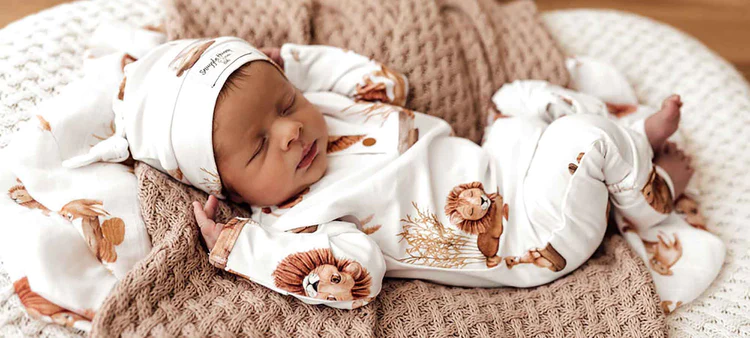
Read More: Why are children’s clothes so expensive?
2. What to Know About Baby Clothing Sizes
Before adding baby clothes to your registry, here are a few things that can help you plan what sizes to add:
- Newborn and 0–3 sizes aren’t the same. Newborn clothes usually fit up to 8 lbs, while 0–3 months go up to around 12–13 lbs. Most babies grow out of newborn sizes quickly, so it’s smart to grab just a few and focus more on 0–3.
- Most babies start in 0–3 months. It’s usually the best bet for a first-size fit, especially if your baby is on the larger side.
- Some babies skip newborn sizing altogether. Bigger babies may go straight into 3–6 months.
- Clothing sizes vary by brand. Some brands run slim, others roomy. Since you won’t know your baby’s body type yet, register for a mix so you’ll have a few options that work.
- Planning ahead? Sizes 6–12 months are helpful if you’re thinking about seasonal outfits for later on.
Baby clothes sizing isn’t one-size-fits-all. Here’s a cheat sheet to help you plan based on weight, not just age.
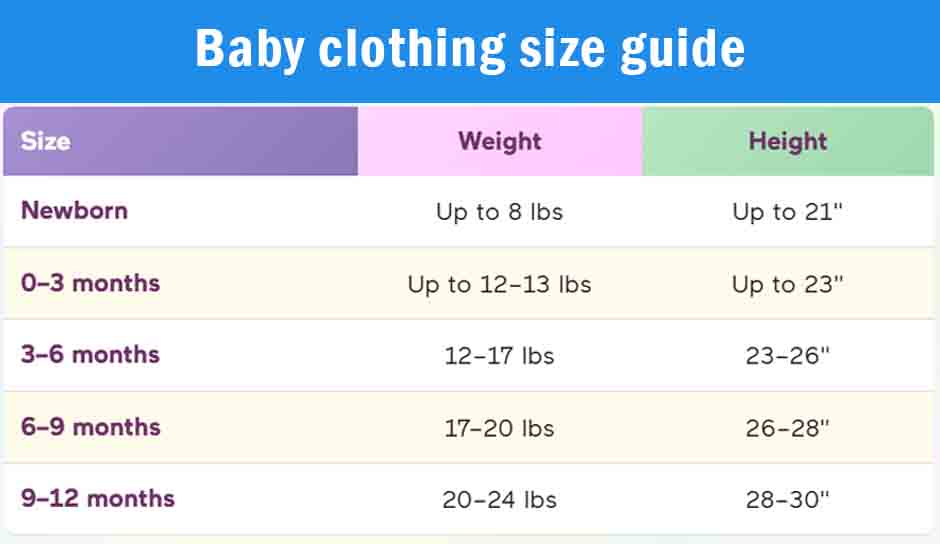
Read More: The Best Infant Fabrics and What to Avoid
3. How many newborn clothes do i need?
- 5 – 6 Newborn clothes: divided into 2 sizes. In the first 1-2 months, babies won’t need too many clothes, and they grow very quickly. Therefore, mothers should only buy the appropriate quantity, opting for loose, comfortable sizes.
- 3 – 4 Infant pants: Usually, newborns and babies in their first month primarily use cloth diapers or diapers with tabs, so they use pants less frequently. Therefore, mothers also buy them in appropriate quantities.
- 3 – 4 Body suits/ Onesies: The simple cotton bodysuits are the cornerstone of a newborn’s wardrobe. They are affordable, easy to launder, and relatively easy to dress and undress a small baby. The purpose of these bodysuits is to keep the baby’s tummy warm during night sleep or when wearing diapers without exposing the belly.
Tip: For newborn baby clothes or body suits/ onesies, choose gentle colors. Because brightly colored clothes are not good or safe for your baby’s skin. It is best to choose white, yellow, blue, or light pink tones.
- 2 – 4 Warm clothes: If you give birth in winter, it’s necessary to buy additional warm clothes for the baby. Mothers should purchase 2 jackets, 2-3 warm tops made of fleece, cotton, wool, etc., for variety. However, if the birth is in summer, buying warm clothes for the baby is unnecessary. Nevertheless, mothers can buy 1-2 moderately thick jackets for the baby to wear when going out.
- 1 – 2 Hat: Baby beanies serve as an excellent method to ensure baby stays warm, comforted throughout the day and protect against from the sun in the early week.
- 5 – 7 Cloth diapers: are safer than paper diapers because they do not contain many chemicals. With the reusable feature of cloth diapers, it will not create as much waste as disposable diapers, helping to protect the environment.
- 4 – 5 Pairs of sock: Since the baby’s body temperature regulation system is still developing, they are vulnerable to both colds and heatstroke. Therefore, it’s advisable for mothers to dress their babies in socks to prevent infections.
- 1 – 3 Special occasions outfit: In fact, this isn’t really essential; having it or not having it doesn’t matter much. Parents can buy to let your baby wear it on special occasions/ festivals where you want him or her to participate.
Keep in mind that the above list is simply a fundamental suggestion. As your newborn grows, you’ll discover the clothing styles that suit you and your baby best. This will provide you with guidance on what to buy as your baby outgrows their initial wardrobe.
Read more: Top 5 Important Factors To Consider When Choosing Babies’ Clothing
4. Some notes when buying clothes for newborns
- Pay attention to the weather: Weather is a factor to consider when choosing clothes for newborns: winter clothes or summer clothes. Mothers need to estimate which season of the year they will give birth and only buy clothes for the baby for the first 2-3 months.
- Don’t buy too many clothes at once: The truth is that newborn babies don’t need too many clothes. Moms should not buy a lot of things at once. Because in the first period of life the baby will grow very quickly, so buying in advance without observing the baby’s development will be a waste.
- Choose clothes according to your baby’s weight and height: For babies in the first 2 months, you should buy size 1, for the 3rd month, use size 2. Mothers can monitor the baby’s height and weight through ultrasounds to choose the appropriate clothing size. Actually, you don’t need to buy one that fits your baby. If you’re wondering between a small size or a big size, choose the big size because your baby will grow very quickly anyway.
- You should choose clothes with light colors because often brightly colored clothes will be produced with chemicals, which are not safe for your baby’s skin.
- Be sure to choose one made of cotton fabric that absorbs sweat and has seams turned out so as not to affect your baby’s tender skin. The shirt should have buttons in front of the chest or a tie on one side to keep the baby’s chest warm.
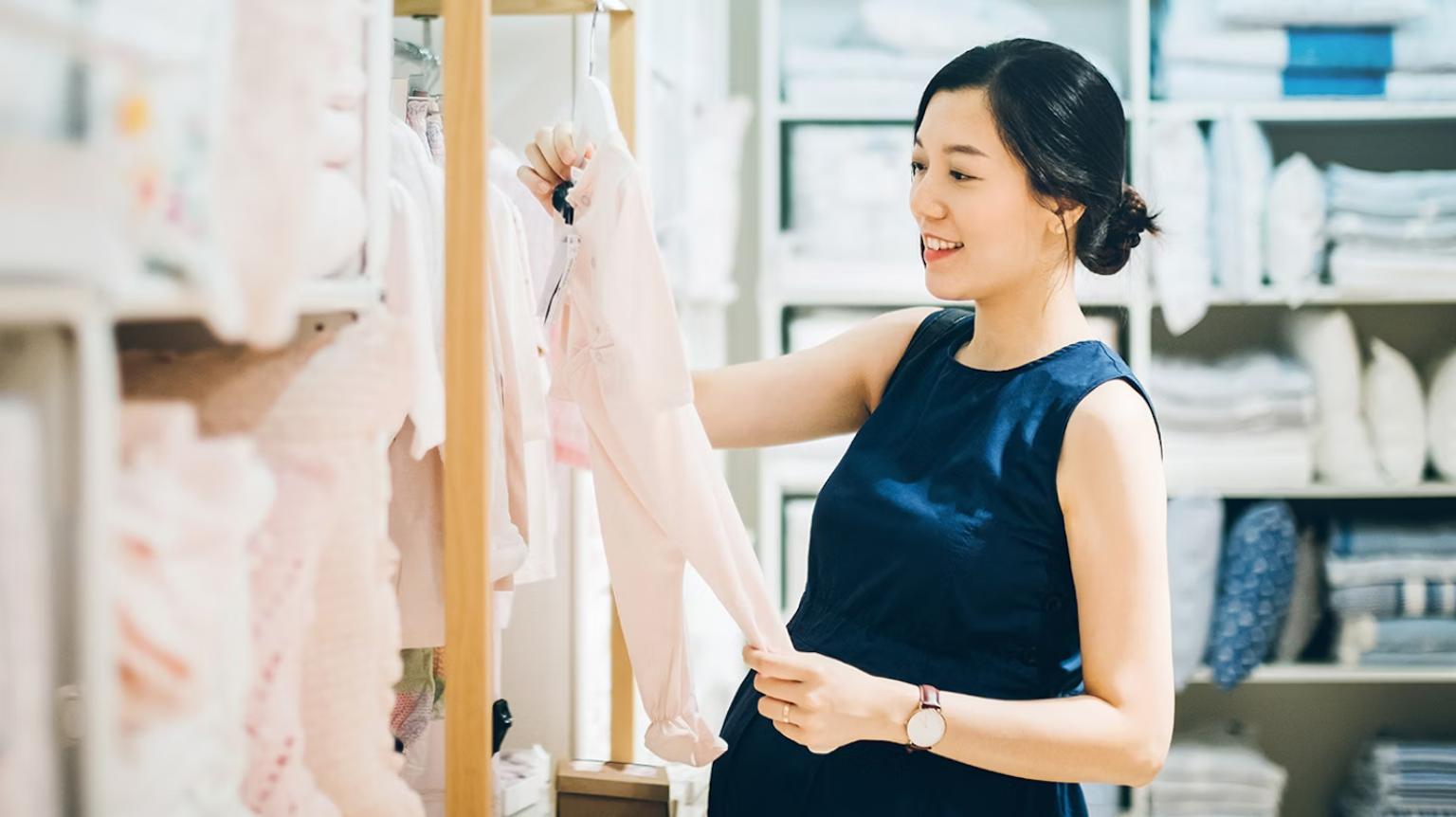
Read More: Critical Differences Between 3 Styles: Sleepsuit, Romper vs Bodysuit
5. Laundry Tip for Infant Clothes
Selecting a mild and gentle detergent is extremely important when laundering newborn clothing to safeguard the delicate skin of the baby. It’s advisable to wash new clothes before use to eliminate any impurities. Utilize a gentle washing cycle and cold water to prevent fabric contraction and maintain softness. Moreover, refrain from using fabric softeners and consider employing a double rinse cycle for babies with highly sensitive skin (or experiencing excessive fabric softener residue!). Routinely inspect buttons or loose threads to ensure safety. Opting for air drying helps preserve clothing quality, but if a dryer is preferred, choose a delicate, low-temperature setting.
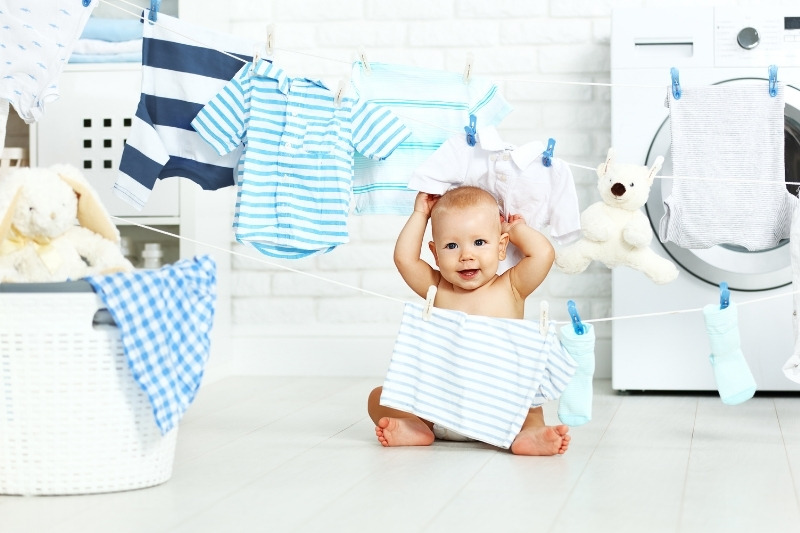
6. Tips for Building Baby’s Wardrobe
Whether you’re expecting a winter baby or one born in the middle of a heat wave, a little planning goes a long way. These tips can help you register for what you’ll actually need in the sizes that make sense for your baby’s first year.
6.1. Plan for the seasons ahead
Babies grow fast—and they’ll hit different sizes in different seasons. If your baby’s due in January, think ahead to how old they’ll be in summer and register for warmer-weather clothes in the right size (lightweight layers, sun hats, a swimsuit, etc.). If your baby is due in the summer, think ahead to what they’ll need once the temperature starts dipping, like booties, a warm bunting and little mittens.
6.2. Stay organized
Tiny baby clothes = easy to lose track of. Organize your registry (and future drawers!) by size so you know what fits now and what’s coming up next.
- If you’re storing most of baby’s clothes in a dresser, drawer dividers are a great investment. They help keep everything in one place (we’re looking at you, tiny baby socks) and can be set up by clothing type, size or any other way you’d like.
- If you’re using a closet to store your little one’s wardrobe, check out closet dividers. (You can also get them as a part of a larger nursery storage set). These hanging signs separate clothes into sizes (this set goes from newborn through 2T) so you can easily see what you have and are less likely to forget about clothes before they’re too small.
- And if you don’t want to purchase an extra accessory for organizing, you can designate a dresser drawer to hold a different type of clothing (pants on the bottom left, onesies on the top right) and only house the size your baby is currently in.
One more organizational tip: rotate out clothing items as soon as your baby outgrows them. Staying on top of this onerous task goes a long way in helping you manage your baby’s wardrobe. Keep a storage bin (or two) on hand so you’ll always have somewhere to stash them; then you can decide if you want to hang onto them for the future, pass them on to someone else or donate them with other baby gear you’re looking to rehome.
7. What should you do with baby clothes you don’t need?
Many parents are curious about how to repurpose their baby’s clothes once they’ve outgrown them. It’s a pity to let perfectly good baby garments go unused. We suggest to parents that these newborn clothes can pass to relative or friends, or donate them to children in highland areas or special, parents can put it in a cabinet as a souvenir.
K–Embroidery is a highly experienced and professional manufacturer of hand-smoked and embroidered children’s clothing with over 25 years of expertise. Our products are selected by many famous brands such as Mascot, Boody, …
You can refer to our featured product samples at this link: Hand smocked baby clothing
We welcome cooperation with retailers, shop owners, fashion companies,…
Don’t hesitate to contact us immediately: Contact Us
8. FAQs
8.1. How many newborn clothes do I really need?
Most parents find that 8–12 outfits are enough for a newborn. This typically includes a mix of bodysuits, sleepers, and onesies. Since newborns often go through multiple outfit changes each day due to spit-ups or diaper leaks, having at least 2–3 changes per day is ideal. However, if you plan to do laundry frequently, you may need fewer items.
8.2. What types of newborn clothes should I buy first?
When preparing for your baby, prioritize comfort, practicality, and season-appropriate fabrics. A good starter wardrobe might include:
6–8 cotton onesies or bodysuits
4–6 sleepers or footed pajamas
3–4 hats and pairs of mittens
4–6 pairs of socks or booties
2–3 swaddles or gowns for easy nighttime changes
Soft, breathable materials like organic cotton or bamboo are best for newborns’ sensitive skin.
8.3. Should I buy a lot of newborn-sized clothes?
Not necessarily. Many babies outgrow newborn sizes quickly, sometimes within just 2–4 weeks. It’s best to have a few newborn-sized outfits (around 5–7) and more in size 0–3 months, which typically fit longer. If you’re unsure about your baby’s size at birth, buying a mix of both sizes is the safest approach.
8.4. How often will I need to change my newborn’s clothes?
Newborns often require 2 to 4 outfit changes per day due to drool, milk spills, or diaper accidents. This is why having a sufficient rotation of clean clothes is essential. Using burp cloths and bibs can help reduce the number of full outfit changes needed each day.
8.5. What fabric is best for newborn clothes?
The best fabrics for newborns are soft, breathable, and hypoallergenic materials such as organic cotton, bamboo, and muslin. These fabrics help regulate body temperature and prevent skin irritation. Avoid synthetic fabrics like polyester or nylon, which can trap heat and moisture against your baby’s skin.
Contact K-Embroidery manager to buy high quality, cute and safe hand-sewn products for children via WhatsApp: +84855555961 to get the best price and order now!
Contact:
- Address: 5th Floor, Building No. 169 Nguyen Ngoc Vu, Cau Giay District, Hanoi
- Hotline: +84855555961
- Website: https://k-embroidery.com/
- WhatsApp: +84855555961

